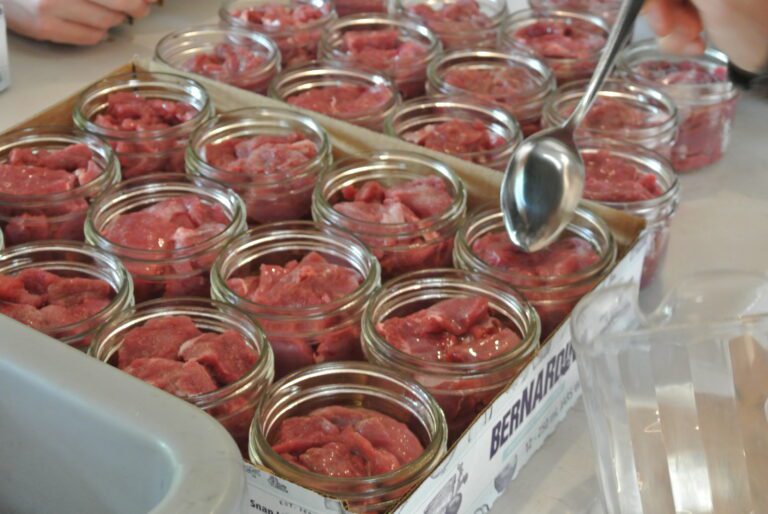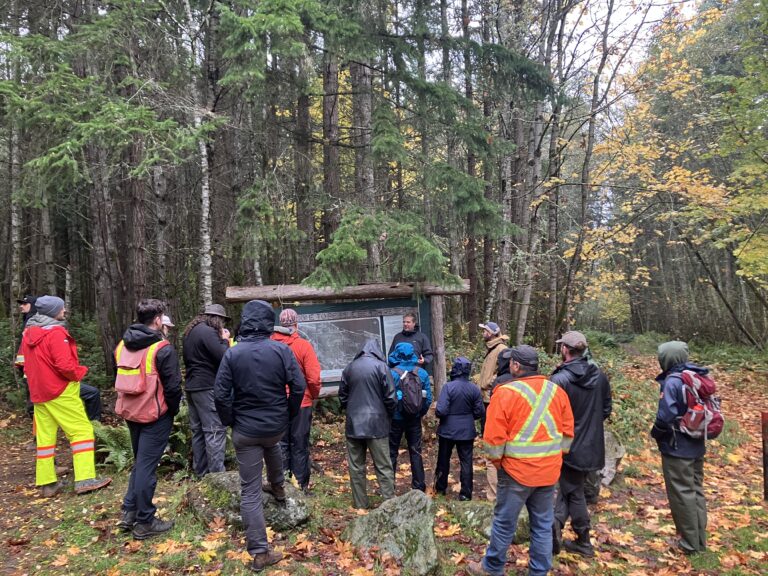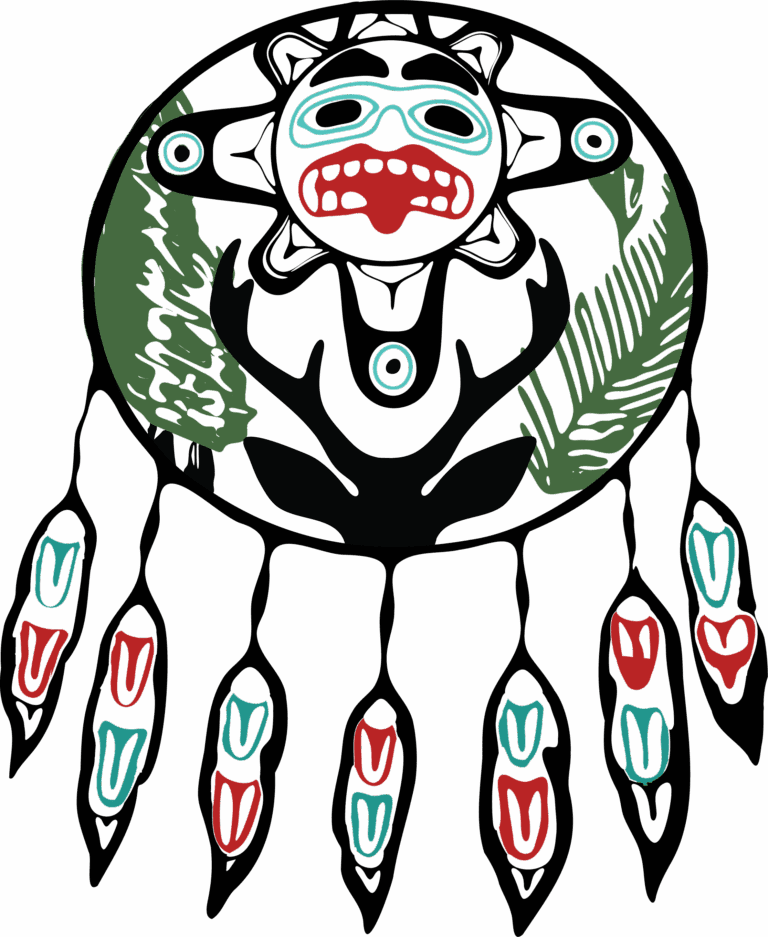Galiano is home to five amphibian species: the Northern Pacific Treefrog, Northwestern Salamander, Long-toed Salamander, Rough Skinned Newt, and the Northern Red-legged Frog. The Northern Red-Legged Frog is of particular interest as the species has been classified as of Special Concern by the Committee on the Status of Endangered Wildlife in Canada (COSEWIC) and on Schedule 1 of the Species at Risk Act (SARA).
The northern red-legged frog is medium-sized, between 7-10 cm, generally grey and reddish with dark spotting; the skin on the lower belly and under the legs is bright red. Red-legged Frogs are found in wetland ecosystems near mature forests such as ponds, marshes, lakes, and slow-moving streams. During the breeding season, February through March, the species utilizes waterbodies and water systems and expands their range “inland” into the surrounding moist forest ecosystems during the spring, summer and fall. This species is found at the northern part of its range on the Gulf Islands, the mainland adjacent to the Strait of Georgia, and the Fraser Valley to Hope, and south into Northern California on the western side of the coastal mountain ranges.
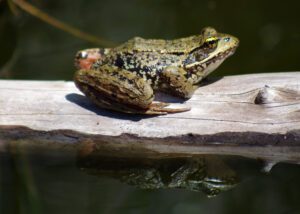
Northern Red-legged frog by Martyne Reedman, Wikimedia Commons
These frogs are at risk due to deforestation, habitat degradation, habitat loss and fragmentation, and disease. In British Columbia, their range coincides with dense urban centers and areas with increasing anthropogenic interfaces and impacts. The intensification of urbanization and agriculture is altering the number of wetlands and their connectivity. The introduction of invasive frogs, such as the American Bullfrog and the Green Frog, also impacts Red-legged frogs through competition and predation.
Amphibians are unique because their skin is permeable and is involved in gas exchange for breathing! However, this attribute makes amphibians exceptionally vulnerable to climate change, as their skin is exposed to all environmental factors such as disease, pollution, toxins, and radiation. This has earned amphibians an association with the expression “canary in the coal mine”, as they are indicators of something askew in their environment.
In response to the multitude of impacts amphibians are experiencing, the Galiano Conservancy Association (GCA) has implemented a multi-pronged Red-legged frog / amphibian monitoring project that also provides habitat for other native amphibians on the island. Over the last few years, the GCA has completed several stages of a watershed-scale wetland restoration project, significantly improving red-legged frog habitat at the Millard Learning Centre. This species breeds in both year-round water bodies and ephemeral wetlands, which fill up during the rainy season and dry up during the summer and early fall.
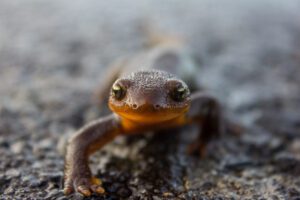
Rough-skinned newt, by Jeremy Scroggins, BLM (Wikimedia Commons)
In addition, GCA staff have been seasonally monitoring amphibians in the wetlands around the Millard Learning Center with a hydrophone. The hydrophone is an underwater microphone used in this application to detect male red-legged frog calls. The males, like those of many other species, call to attract females; an unusual characteristic of this species is that the calls are exclusively made underwater. Their underwater calls can be detected beginning as early as January through to March, as soon as ponds thaw from the winter freeze. Each evening in late winter and early spring, our team sets up a recording device in wetlands likely to support red-legged frogs and submerges the hydrophone attached to a recording device. We collect call data throughout the night into the following morning. The field team then collects the audio recorders and analyzes the recordings for frog calls! Red-legged frog (RLF) calls sound like low-pitched grunts, or as our team calls them, “water pig oinks!” The rationale behind monitoring RLF calls in the MLC wetlands provides insight into how long it takes for the species to begin occupying newly restored wetlands and what kind of wetlands they occupy. This kind of information greatly informs our restoration work regarding habitat creation.
After the breeding season, the GCA begins conducting egg mass surveys, inspecting wetlands for the presence of red-legged frog eggs and any eggs of other amphibian species. RLF frog eggs are laid in a cluster; the mass ranges between ‘grapefruit’ and ‘cantaloupe’ in size. The masses are attached to emergent vegetation or material held fast in the wetlands. Monitoring egg masses is a means to determine habitat preferences for the species and, similar to the hydrophone data, provides an insightful metric for the success of our wetland restoration work.
The GCA will conduct egg mass surveys in early spring. If you are interested in participating, please contact conservation@galianoconserancy.ca. Another great way to stay involved is to participate in citizen science platforms like iNaturalist and Biodiversity Galiano and report your sightings!
